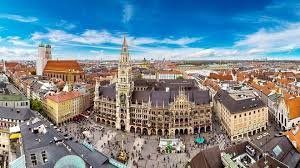Basdalm Separation on Images: A Comprehensive Guide
Introduction
In the digital age, where images dominate the online landscape, ensuring the clarity and distinction of components within those images is crucial. One powerful technique that has emerged is Basdalm Separation on Images. This method helps in separating different visual elements, enhancing image processing, and improving the overall quality of images. Whether you’re a professional photographer, a graphic designer, or someone interested in the technical aspects of image editing, understanding Basdalm Separation can be a game-changer.
This blog will dive deep into what Basdalm Separation on Images means, why it’s important, and how it’s applied in various fields. We’ll break down the process, offering simple explanations for easy understanding, so even those new to the concept can grasp it effectively. Additionally, we will explore real-world applications of this technique, especially in fields like machine learning, medical imaging, and photography.
What Is Basdalm Separation on Images?
Basdalm Separation on Images is a technique used to isolate or distinguish different components or objects within an image. It involves segmenting various parts of the image so they can be processed, analyzed, or manipulated independently. The method can separate the foreground from the background, extract certain objects, or distinguish colors and textures. The term “Basdalm” refers to a specific algorithm or methodology applied during the separation process, ensuring precise results.
The need for Basdalm Separation on Images arises when dealing with complex visuals where different components need to be analyzed or edited separately. For example, in medical imaging, separating tissues and organs from each other in a scan is crucial for accurate diagnoses. Similarly, in machine learning, the ability to distinguish objects in an image improves model training accuracy.
Importance of Basdalm Separation on Images
The Basdalm Separation on Images technique holds immense value in numerous sectors. It not only enhances image processing efficiency but also offers more control over how images are manipulated. Here are some of the key reasons why this separation technique is important:
- Improved Image Analysis: By separating components within an image, it’s easier to analyze each part individually. This is particularly useful in fields such as medicine, where precise image analysis can lead to early disease detection.
- Enhanced Visual Effects: For creative industries, separating objects in an image can allow designers to apply different effects to different sections, resulting in visually stunning graphics.
- Accurate Object Detection: In machine learning, object detection algorithms can more accurately identify different objects when the image components are separated effectively.
- Efficient Editing: When working with complex images, editing becomes easier if various elements can be isolated from each other. Designers can focus on editing specific parts of an image without affecting the entire picture.
How Does Basdalm Separation Work?
Basdalm Separation on Images operates through a series of steps that isolate and classify different components of an image. Here’s a simplified breakdown of how the process works:
- Preprocessing: This involves converting the image into a format that is easier to analyze. This can include converting the image to grayscale or adjusting the contrast.
- Segmentation: The image is divided into different segments based on color, texture, or intensity. This segmentation helps in isolating the objects within the image.
- Object Identification: Once the segments are created, algorithms can be applied to identify specific objects or regions in the image.
- Extraction: The identified objects or regions are extracted from the image. These can then be processed, manipulated, or analyzed separately.
- Post-Processing: After the objects are extracted, additional processing can be applied to refine the image further. This can involve smoothing edges, enhancing colors, or applying filters.
This step-by-step process ensures that images are separated cleanly, allowing for precise control over each component.
Applications of Basdalm Separation on Images

Basdalm Separation on Images is widely applied in various industries, offering a range of practical uses. Let’s explore some key areas where this technique is making a significant impact.
1. Medical Imaging
Medical imaging is one of the most important fields where Basdalm Separation on Images is used. In radiology, for example, separating tissues, organs, or abnormal growths within an image can provide a clearer picture of the patient’s condition. This is particularly crucial in detecting tumors, as separating a tumor from surrounding tissues ensures more accurate diagnosis and treatment planning.
2. Machine Learning and AI
Machine learning models that process visual data rely heavily on the ability to distinguish between objects in images. By using Basdalm Separation on Images, these models can be trained to recognize and classify objects more accurately. This has applications in autonomous driving (recognizing pedestrians, vehicles, etc.), security systems (face recognition), and even in retail (analyzing customer behavior through video).
3. Graphic Design and Photography
In creative industries, separating different elements in an image can allow for more precise editing. For photographers, this might mean isolating a subject from the background to apply different effects. Graphic designers might use Basdalm Separation to layer images, create composites, or add visual effects without interfering with other parts of the design.
4. Satellite and Aerial Imaging
Satellite imaging plays a critical role in environmental monitoring, urban planning, and disaster management. With Basdalm Separation on Images, different landforms, bodies of water, and man-made structures can be separated from each other, making it easier to analyze environmental changes or assess damage in the event of natural disasters.
5. Augmented Reality (AR)
In AR, separating elements in real-time from the surrounding environment allows virtual objects to be placed accurately within a physical space. This is essential in fields like retail (trying out products virtually), education (interactive learning), and gaming.
Tools and Techniques for Basdalm Separation
Several tools and software solutions are available to assist in performing Basdalm Separation on Images. While some of these tools are designed for professional use, others can be used by beginners looking to experiment with image processing. Here are some popular tools:
- Adobe Photoshop: A powerful tool for image editing, Photoshop allows users to manually separate components of an image through layers, masks, and selection tools.
- MATLAB: Widely used in academic and professional environments, MATLAB offers built-in functions for image processing and separation, ideal for scientific research and technical applications.
- OpenCV: This open-source computer vision library is widely used in machine learning and AI applications. It provides a variety of image segmentation techniques, including thresholding and contour detection.
- GIMP: A free and open-source alternative to Photoshop, GIMP provides several tools for image segmentation and separation, making it accessible to users without expensive software.
- Scikit-image: For Python users, Scikit-image offers a range of tools for image processing, including algorithms for segmentation, object detection, and more.
Challenges in Basdalm Separation on Images
While Basdalm Separation on Images offers many advantages, it also comes with its own set of challenges. These challenges primarily revolve around the complexity of images and the limitations of current technology.
- Complexity of Real-World Images: In some cases, images may be too complex, with overlapping objects, varying textures, or inconsistent lighting. This makes it difficult to achieve a perfect separation.
- Accuracy of Algorithms: While algorithms like Basdalm are effective, they are not foolproof. Achieving high levels of accuracy in separating objects within an image can be computationally expensive and time-consuming.
- Noise and Distortion: Images that contain a lot of noise or distortion (due to poor lighting or low resolution) can make it difficult for separation algorithms to distinguish between different elements accurately.
Conclusion
Basdalm Separation on Images is a revolutionary technique that has transformed how we process, analyze, and edit images across various industries. From improving medical imaging to enhancing machine learning models and providing more control in creative design, its applications are far-reaching. While challenges still exist, advancements in technology continue to refine this method, making it more accessible and accurate.
Whether you’re a professional or a novice in the world of image processing, understanding Basdalm Separation is key to mastering the art of handling complex visuals. With its ability to improve image clarity, accuracy, and functionality, this technique is paving the way for the future of visual content.






